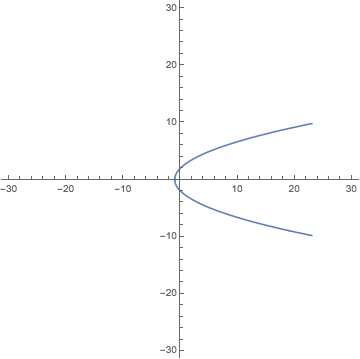I am plotting polar curves with PolarPlot and I tried plotting a parabola with $\frac{2}{1-\cos x}$ and $\sec x$.
Obviously there are two singularities that have to be considered, $\cos x=1$ and $\cos x=0$. I dont know how to specify multiple singularities for the same function or variable. This is what I have tried so far:
PolarPlot[{2/(1 - Cos[x]), Sec[x]}, {x, 0, 2 \[Pi]},
Exclusions -> {Cos[x] == 0, 1}]
PolarPlot[{2/(1 - Cos[x]), Sec[x]}, {x, 0, 2 \[Pi]},
Exclusions -> {x == 0, 2 \[Pi], \[Pi]/2, (3 \[Pi])/2}]
PolarPlot[{2/(1 - Cos[x]), Sec[x]}, {x, 0, 2 \[Pi]},
Exclusions -> {Cos[x] == 0, Cos[x]==1}]
What is the right way to do this?
Any help appreciated. Thank you.






PlotRange: i.sstatic.net/VvfsJ.png $\endgroup$